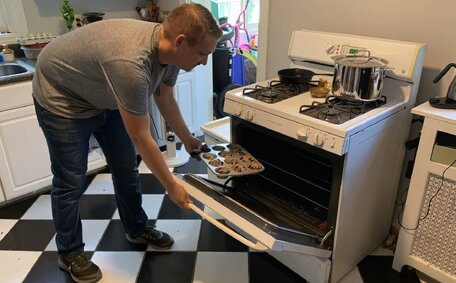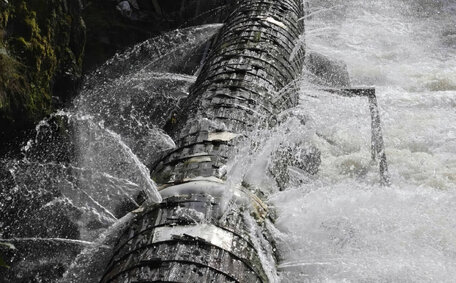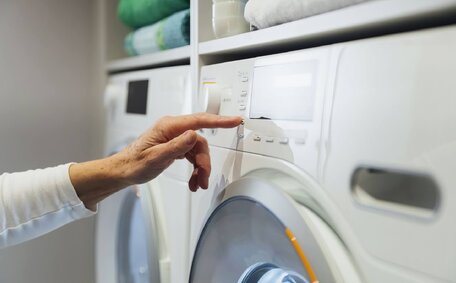Assessing Drain Blockages
Addressing drain blockages promptly at the first sign of a clog is crucial. Common indicators of a clog include slow drainage, gurgling noises from pipes, and water backing up. Swift action to clear a drain blockage can prevent damage to your plumbing and avert potential flooding in your home.
Begin by checking every drain, including sink shower areas in your kitchen and bathrooms, to make sure they, and laundry, not to mention outdoor areas, are clear. Try running water down drain in sinks, showers, and tubs to check the flow and ensure they are functioning properly.Listen for any strange noises coming from the pipes. If water begins to accumulate or drain outside sluggishly, it’s a clear sign of a clogged drain, which can worsen if left unattended.
It’s prudent to enquire about unblocking how external connection points of your plumbing could reveal signs of a blocked drain. Remove any drain covers and look for signs of a blocked drain, like standing water or debris buildup. Tree roots, dirt, and foreign items can be signs blocked, turning into common culprits for clogged exterior drains and sewer lines.
Early identification of what’s causing blocked drains is essential for effective clearance. Determining blockage your drain pathways and addressing the root of the problem swiftly also mitigates overall repair expenses and the risk of structural harm in severe scenarios.
Identifying Signs of Clogged Drains
A few significant indicators can suggest a potential drain clog. The most Water pooling around drain openings is a definitive sign that unblocking action is required. You may also notice gurgling noises coming from pipes as water tries to pass through the blockage.
Unpleasant sewage odours wafting up from your outdoor drain over time are another telltale clue, especially from sink, shower, and tub drains inside your home. Your outside drain can also give off nasty smells if it becomes blocked.
Observe your kitchen, where food scraps and grease tend to build up and lead foul odours down sink drains. Globs of grease and stubborn residue floating in standing water are clear red flags indicating your kitchen drain requires dedicated drain cleaning.
New gurgling or splashing sounds when you flush toilets or run any water fixtures can indicate partial obstructions. As well as toilets that can sometimes struggle to fully empty after flushing.
Investigating signs of blockages rather than ignoring them is important. Understanding the causes blocked situations of drains, you recognise that issues won’t resolve on their own, and neglecting them can lead to raw sewage backups throughout your home’s plumbing system.
Locating the Blocked Area
To understand how to unblock exactly where a drain is blocked, start by systematically checking likely areas to keep your drainage system running smoothly.
Carefully examine your sink, looking for signs blocked drain, all showers, tubs and toilets inside your house, including the drain cover. Try running water to see if any fixtures have slow drainage. Pay special attention to the areas under sink in your kitchen and bathroom units in search of any standing water or unpleasant odours.
To unblock outside drain, remove any drain covers to inspect for accumulations of debris or instances of water pooling near the aperture. Use your flashlight to look down your pipe for obstructions.
Finding where the drain can be accessed early on youll need makes clearing blocked drain much quicker and easier. It ensures that any drain cleaners or mechanical unblocking measures are directed at the correct location.
Safety Precautions Before Unblocking
Taking proper safety precautions is crucial before attempting to unblock a drain yourself. This safeguards against illness from exposure to harmful chemicals as well as potential injuries during unblocking efforts.
Always don thick rubber gloves and safety goggles. Gloves safeguard your hands from amassed grime and bacteria, which, when clearing a shower drain, can help prevent contact with typical causes of blocked drains and protect from hazardous substances found in some chemical drain cleaners. Goggles guard your eyes from unwelcome splashes or debris that may surface during your diy drain cleaning endeavours.
Ensure the area is well-ventilated, especially when employing commercial drain cleaner solutions or concocting DIY soda vinegar mixtures. Wear a protective face mask if strong fumes are present.
When using any product, carefully review all instructions and dont want to ignore the precautions, especially when exploring six effective ways to unblock drains safely. Avoid mixing chemical drain cleaners, which could produce toxic gases. Only use plumbing snakes and if familiar with operating a drain auger.
Have cold water on hand for quick rinsing of chemical spills on the skin or in the eyes. Unplug nearby appliances and cover flooring to safeguard from potential water damage or floods when you’re exploring how to unblock drain 6 ways on your own.
Working safely is paramount when tackling how unblock drains by yourself. Stay aware of hazards and implement measures to mitigate risks.
Trying a Plunger
A plunger is often the most efficient tool for drain clearing readily available at home. Suitably positioned over the clogged section and employed with a firm press down, the trusty plunger can used to generate the necessary suction to decisively clear the blockage.
Initiate the process by filling the sink or basin with a few inches of water, recognizing that obstructions can occur even if minimal water can pass through, and prepare your plunger. Submerge the plunger entirely, tilting it slightly to allow air pockets to escape. Position it tightly over the drain opening before starting the plunging motion.
Quickly push the plunger straight down with as much force as possible, then pull straight back up, effectively initiating the drain using the plunger’s pressure. Repeat process vigorously a few times, about 10 to 15 to be precise, to create enough suction. This should create sufficient suction to clear the blockage.
Plungers excel at using pressure to break up blockages in showers, sinks, tubs, and toilets, and sequentially dispensing hot water down can purge lingering debris post-plunging. Sequentially dispensing a mixture of hot water can generate a robust flush to eliminate remaining debris post-plunging.
Using a Wire Coat Hanger
A wire coat hanger can be a useful drain diy tool for clearing blockages caused by hair and debris. Start by straightening out the hanger then bend one end into a small hook.
Slowly insert the hooked end into the drain opening, gently working it down through bends in the pipe. Twisted clockwise and counterclockwise motions with the wire can help guide the hook along drain contours. Use caution not to scratch your pipes.
When you encounter resistance from built-up debris, carefully hook the material causing blockage and slowly extract out the drain. Wear gloves as you gently remove hair, soap scum, and other grime out your drain that caustic cleaners would typically address, causing the clog.
Wire coat hangers can efficiently navigate inside pipes, unblocking drains such as bathroom sinks and tub drains by removing hair clumps. Be careful not to scratch enamel or ceramic surfaces. It also helps to send boiling water down afterwards for extra cleaning.
Baking Soda and Vinegar Treatment
A baking soda and vinegar mixture is a safe and effective DIY method for unblocking drains. Begin by pouring roughly one cup of bicarb soda into pipe through the drain, laying the groundwork for a potent DIY clog solution. Follow up with a half cup of household white vinegar which, with its fizzing action, can break apart grease clogs, hair clumps, and miscellaneous grime.
After the vinegar application, promptly secure a stopper over the drain opening; it’s how unblock drain happens next, the hot water flush, that finalises the unblocking effort. Next, use your kettle to pour boiling water down drain, sweeping away the loosened clog.
This can use the fizzing action required to how clear blocked drain, with cup baking soda inside the pipe to maximise the pressure. Allow the mixture to work its magic for minutes then proceed to rinse the mix down the drain.
Compared to harsh chemical cleaners, baking soda and vinegar is a non-toxic option you likely already have at home. It’s also gentle on your pipes while still being highly effective. Just be sure to close off the drain initially so gases can accumulate and act directly on the clog - this boosts cleaning power.
Chemical Drain Cleaners
For clearing blocked drains, chemical drain cleaners can be used carefully as a last resort when more benign unblocking methods fail. These commercial cleaners come in liquid or crystal granule forms and use ingredients like sodium hydroxide, sulfuric acid, or bleach to break down organic blockages.
Be extremely vigilant when introducing chemical drain openers into your pipes, preventing any adverse consequences coming your way. Wear gloves, goggles, and protective clothing to prevent skin contact or splashes getting in eyes. Work in a well-ventilated area and avoid mixing products or inhaling fumes.
You can try using the suggested amount on the package by pouring it directly into the blocked drain and allow to sit for the recommended contact time to dissolve the clog.
Then carefully pour down boiling water for several minutes, ensuring it stems from your hot water systems used for household heating. Excessive amounts of cleaners or prolonged contact inside pipes can induce corrosion, a situation where the blocked drain can severely impact your plumbing system.
While fast-acting, the use of caustic soda in these commercial cleaners makes them a risky, damage-prone last step before calling a professional. Only use them when necessary and handle with extreme care to avoid injury or lasting plumbing issues.
Snaking the Drain
Should home remedies prove ineffective, you’ll need to consider how fix blocked drain, perhaps introducing a drain snake or auger to your pipes as the next measure before enlisting professional plumbing services. Drain augers are effective tools for clearing a problematic sink drain; they are spiral metal rods with a crank handle that manually feeds the rod down into pipes to physically remove clogs.
Selecting the Right Snake
Opt for a drain snake auger measuring approximately 3 feet for navigating through bathroom and kitchen sink drains. Longer 10 to 25-foot augers are required for clearing deeper main sewer and exterior drainage pipes. Electric powered drain snakes allow effortlessly spinning the cutting head to clear blockages.
Slowly Work the Auger Down Pipes
Carefully insert the spring-loaded end into the drain opening, easing it into drain passages while adjusting the crank angle as needed. Slowly turn the handle as you push the rotating auger deeper through bends. Apply extra force if you meet resistance to work through the clog.
Retrieving Blocked Items
Once the snake clears the obstruction, slowly crank in reverse to extract it along with the material causing blocks. Wear protective gloves when removing tangled hair, grease blobs and other grimy debris from pipes. Flush with your hot water supply after clearing the clog.
Drain augers how fix these issues proficiently remove all types of organics causing obstructions. If DIY attempts are fruitless, it’s prudent to call plumber, such as Erskine Park Plumbing, especially when difficult blockages resist all attempts at clearing.
Preventing Future Clogs
Employ drain strainers in sinks and tubs to intercept hair and debris. Employ drain strainers in sinks and tubs to intercept hair and debris. Let the fizzing reaction occur, Then rinse with some hot water to help keep debris from going back into your pipes clear.
Keep an eye on outside drains by taking out strainers and cleaning them routinely.
Outside, particularly ensure that gutters aren’t obstructed by too much toilet paper or leaves and dirt. Employ covers as part of your routine to clean out exterior drains, thereby avoiding the downfall of foreign objects or rodents. Tree roots, and even improper disposal of items like cat litter, can cause major issues long-term so consider professional drain inspections if suspected.
Vigilance and comprehension of what causes drain blockages, along with regular maintenance and DIY cleaning, can often circumvent costly blockages.
When to Call a Professional Plumber
There comes a point when DIY methods are no longer effective for clearing severe or recurring drain blockages. If you have tried all the usual at-home solutions like plungers, augers, and chemical cleaners without success, its time to call in your local professional plumber.
The experts at Erskine Park Plumbing are equipped with the right tools, akin to a well-stocked hardware store, necessary to locate obstructions within your drains. We can also perform pipe inspections with a high-tech drain camera to identify issues causing chronic clogs.
Our licensed technicians are trained in using advanced tools like pressure hoses to thoroughly cleanse pipes or slice through tree root intrusions. We also offer long-term preventative solutions, such as pipe relining to reinforce damaged drains.
Emergency Blocked Drains
If you experience a complete sewage backup or serious flooding from blocked exterior drainage, contact our plumbing service immediately for urgent assistance. We operate 24/7 to swiftly contain damage and restore proper flow.
Recurring Clogs
If a specific problem drain keeps blocking up despite efforts to keep it maintained, a professional assessment is recommended. We can pinpoint underlying issues and remedy them to prevent repeat blockages.
If you’re in the Gold Coast and require assistance, don’t hesitate to pick up the phone and call Erskine Park Plumbing on 1300 349 338 or email us at [email protected]. Our friendly, local technicians are always ready to help with your stubborn blocked drain problems.






